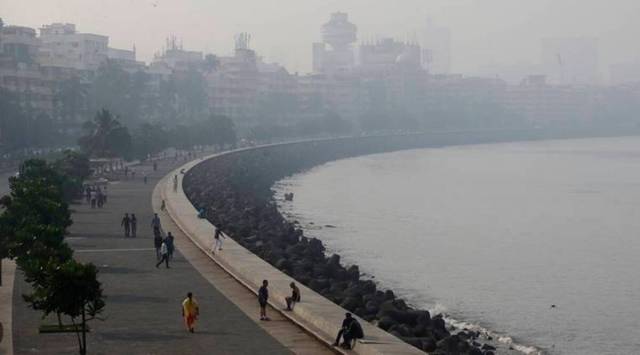- India
- International
In 27 years, Mumbai saw 2-degree C rise in temperature even as built-up area increased 66%: Study
According to the authors, the findings of this study could be beneficial for urban planners and policymakers in urban green space spatial planning and urban heat island mitigation strategies.
 The study analysed 40 continuous ambient air quality monitoring stations (CAAQMS) in Maharashtra -- one each in Aurangabad, Kalyan, Nagpur, Nashik and Solapur, two in Chandrapur, four in Navi Mumbai, eight in Pune, and 21 in Mumbai. (File)
The study analysed 40 continuous ambient air quality monitoring stations (CAAQMS) in Maharashtra -- one each in Aurangabad, Kalyan, Nagpur, Nashik and Solapur, two in Chandrapur, four in Navi Mumbai, eight in Pune, and 21 in Mumbai. (File)
Mumbai has witnessed a 2-degree Celsius average temperature rise across 27 years (1991-2018), while the built-up area of the city has risen by 66 per cent in the same period, a study by Researchers Faculty of Natural Sciences, Jamia Millia Islamia University in New Delhi, Osmania University in Hyderabad, and Aligarh Muslim University, Uttar Pradesh has found.
“We observed that the average temperature in 1991 was 34.08 degrees Celsius. It rose to 36.28 degrees Celsius in 2018 (a 2.2-degree Celsius increase) under the heat island zones (vulnerable areas), thus exposing people to higher heat risk,” said Shahfahad, Senior Research Fellow at the Department of Geography, Jamia Millia Islamia University, and lead author of the study.
The study titled ‘Urban Heat Island Dynamics in Response to Land-Use/Land-Cover Change in the Coastal City of Mumbai’ — published in the peer-reviewed Springer Journal of the Indian Society of Remote Sensing — states that with the pace of urbanization and landscape transformation over the last three decades in Mumbai, it is expected that the effect of urban heat island intensity will further increase in the city.
Heat islands are urbanized areas that experience higher temperatures than outlying areas or rural areas. Structures such as buildings, roads, and other infrastructure absorb and re-emit the sun’s heat more than natural landscapes such as forests and water bodies.
Urban areas, where such structures are highly concentrated and greenery is limited, become “islands” of higher temperatures relative to outlying areas.

Explaining that the health impact of the urban heat island effect on citizens, Akshay Deoras, an independent meteorologist and PhD student at the University of Reading in England, said, “The resulting discomfort due to the heat island effect is often amplified in Mumbai due to the highly moist weather condition. During October the heat index in the city often touches 45 degrees Celsius even as the actual maximum temperature might be hovering around 35 degrees Celsius. This is because the relative humidity in the city can be at 60 per cent.”
The study found that Mumbai lost 81 per cent of its open land (barren spaces without any vegetation), 40 per cent green cover (forests, scrublands) and approximately 30 per cent of its water bodies (lakes, ponds, floodplains) between 1991 and 2018 while the built-up area (areas developed upon) has risen by 66 per cent, leading it to become an island of high temperatures.
“This rise in heat intensity in Mumbai is linked to the declining green cover in the city, which is the result of large-scale transformation of the green cover into built-up land for infrastructural development,” said Atiqur Rahman, professor, Department of Geography, Faculty of Natural Sciences, Jamia Millia Islamia.
Using satellite imagery (USA-NASA Landsat datasets), the authors studied an area of 603 sq. km of Mumbai – city and suburbs — to understand the land-use and land-cover changes, difference in maximum, minimum and average temperatures (for urban heat island intensity), land surface temperatures, changes in vegetation cover versus urban built-up density between 1991 and 2018.
According to the authors, the findings of this study could be beneficial for urban planners and policymakers in urban green space spatial planning and urban heat island mitigation strategies.
“To overcome the heat stress there is an urgent need to promote urban greening at micro/wards/mohalla level and rooftop terrace gardening as well as discouraging the use of glass in high-rise buildings,” the authors said.
Apr 26: Latest News
- 01
- 02
- 03
- 04
- 05








































